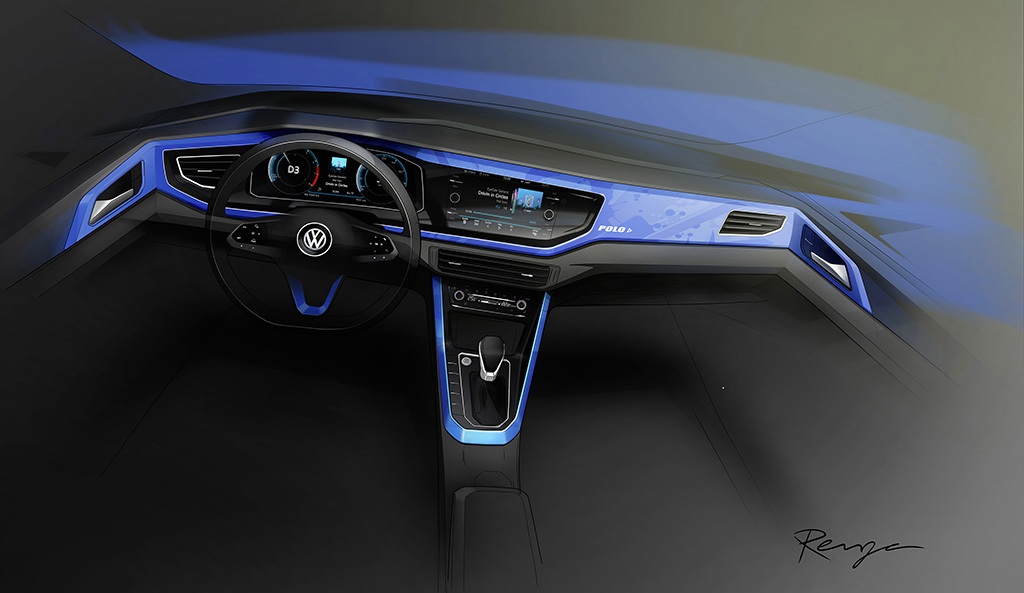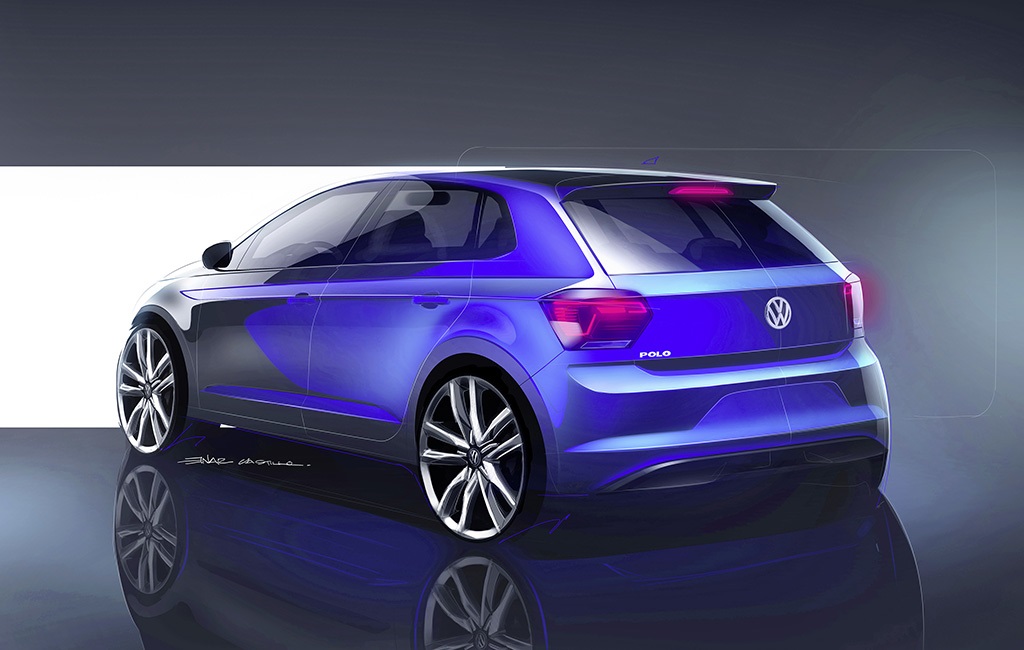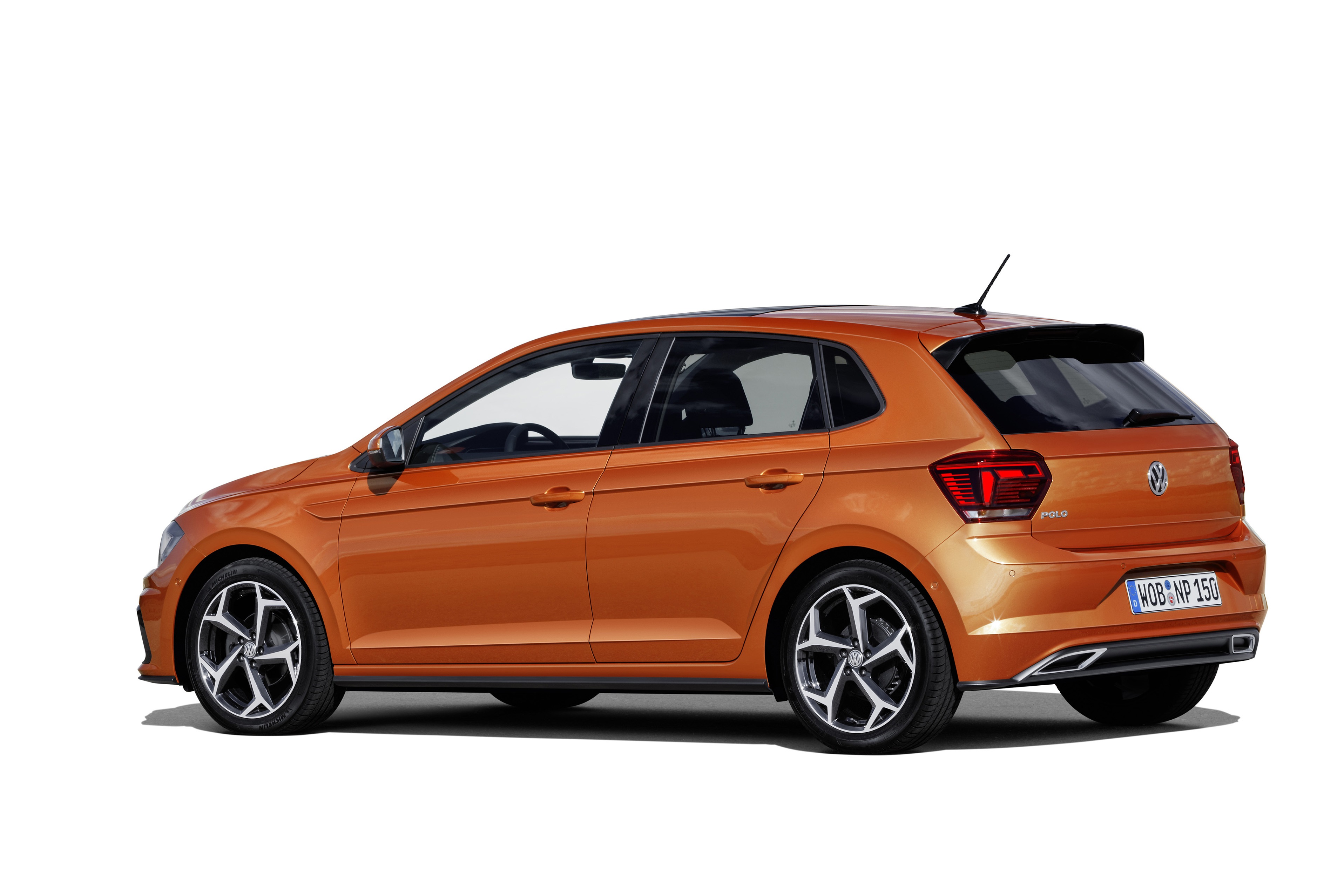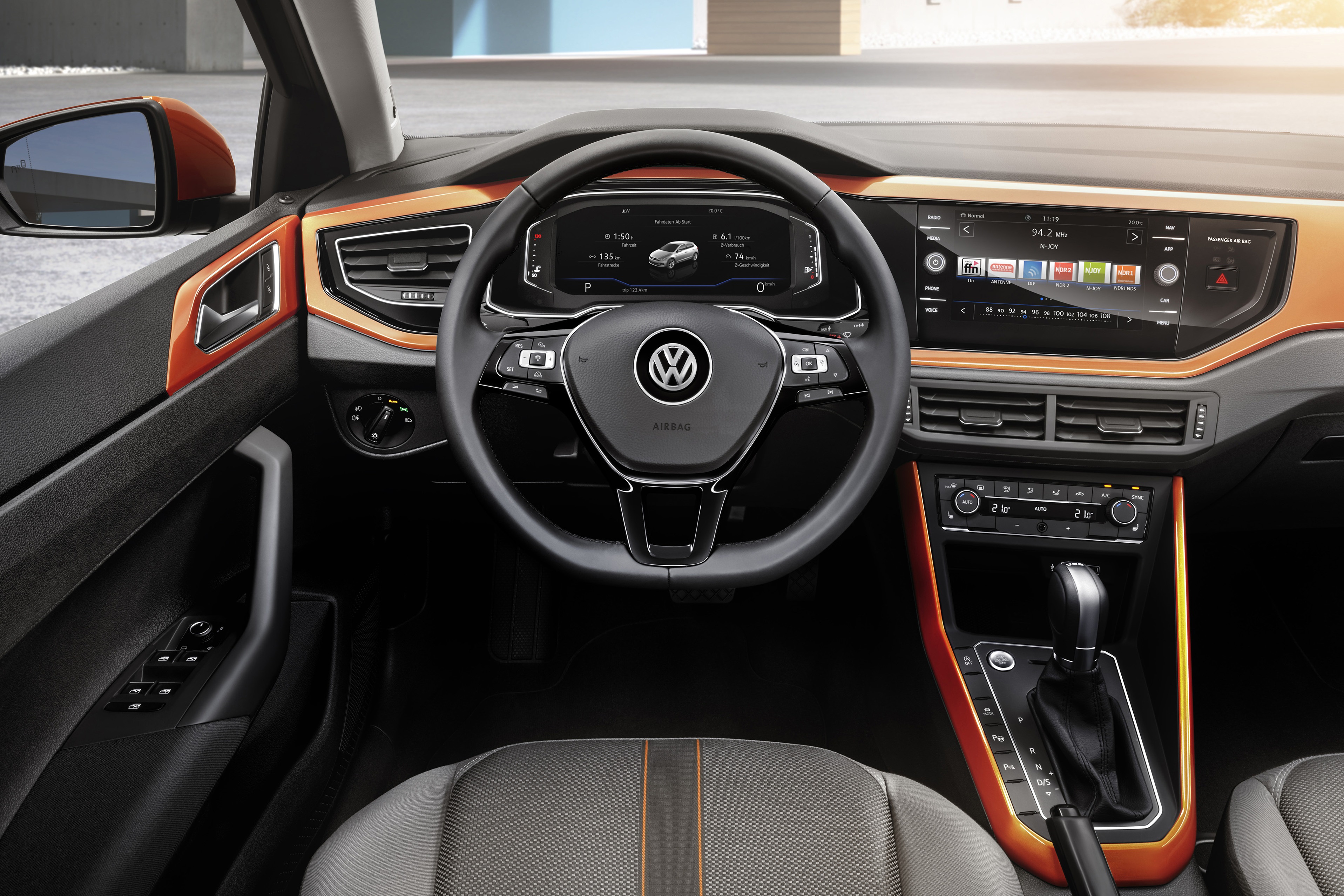With more than 14 million units sold, it is one of the world’s most successful compact cars: the Volkswagen Polo. Now a completely new generation of the best-seller is launching. With an entirely new exterior design, noticeably more spacious interior that has also been redesigned down to the last detail, new cockpit layout structured for the digital world, efficient TSI (petrol), TGI (natural gas) and TDI (diesel) engines1/2 as well as an array of assistance systems which previously was only familiar in larger Volkswagen cars.
The front end of the Polo was made much more emotional, dominant and sportier than that of the previous model. Each detail was carefully re-designed. The headlights are now also available in an LED version. Together with the new radiator grille, they form the new ‘face’ of the Polo that extends across the entire vehicle width. The sixth generation Polo has become a masculine car, which generates charisma from all perspectives with its new expressive design. The following details define the Polo when it comes to its significantly stretched silhouette. The roof line was made longer and thereby more elegant; it transitions into a roof spoiler at the rear. A fine line on the side body runs parallel to the roof line; it visually lowers the Polo’s centre of gravity.
The Polo’s rear bodywork design had been instantly recognisable even before the fifth generation made its debut. Now the clean, well balanced overall architecture has been significantly further developed and made more precise and sharper. For the first time, they will also be available on the Polo as LED tail lights with a very distinctive light signature.
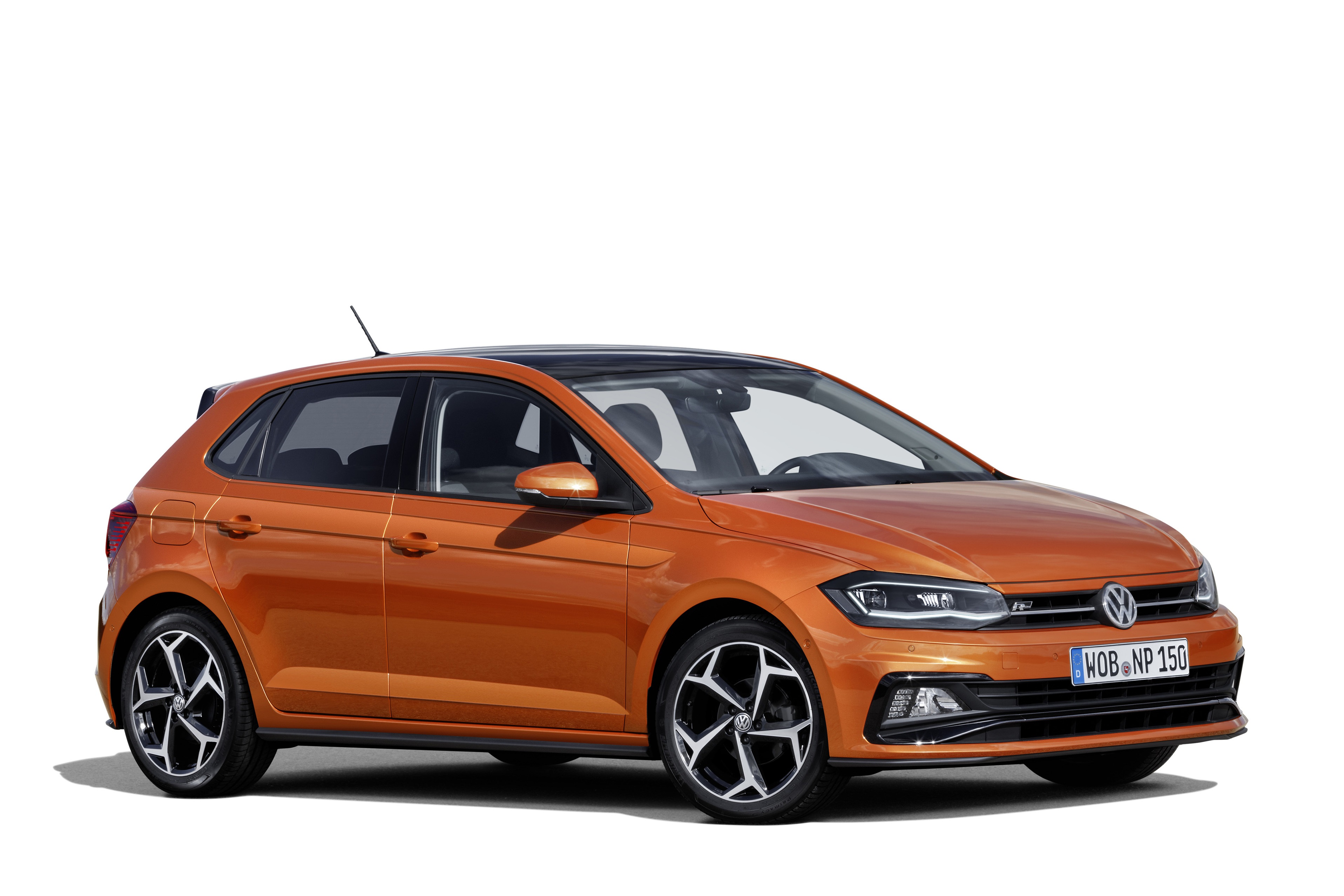
Interior designers have made revolutionary changes. Their focus was on continued growth in the digitalisation of displays and controls as well as connectivity, and this called for clever new solutions. Another declared goal was to give the interior much more character than before and to thereby give the Polo an interior ‘face’ as well. The interior team started with a blank slate, departed entirely from the vertically-oriented dashboard layout of the previous model and developed instead a bold horizontal architecture.


